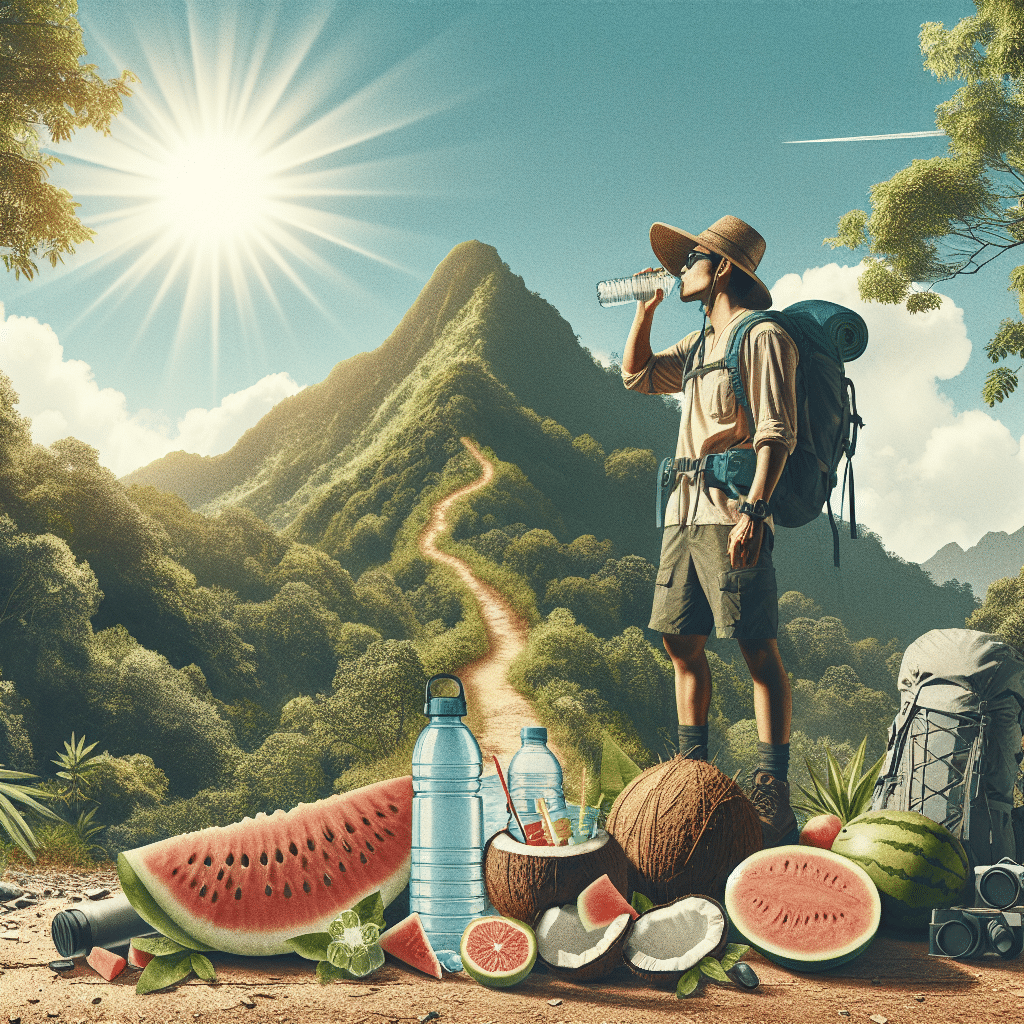Hydration Strategies for Summer Hiking
Understanding Hydration Needs
Maintaining proper hydration is crucial while hiking, especially in the summer when temperatures rise and humidity levels fluctuate. The human body loses water through sweat and respiration, and during physical activities such as hiking, these losses increase significantly. On average, a hiker can lose between 0.5 to 2 liters of water per hour, depending on activity intensity and environmental conditions. Understanding your individual hydration needs is fundamental to enjoying safe and successful excursions.
Pre-Hike Hydration
1. Start Early: Begin hydrating at least 24 hours before your hike. This can help pre-load your body’s water stores. Aim for at least 2 to 3 liters of water the day prior.
2. Electrolyte Balance: Along with water, maintain a balanced intake of electrolytes, such as sodium and potassium, to support muscle function and prevent cramping. Consider consuming broths, sports drinks, or electrolyte tablets to ensure adequate levels.
3. Monitor Urine Color: A simple yet effective method to gauge hydration is by monitoring urine color. It should be light yellow; darker shades indicate dehydration.
Essential Hydration Gear
1. Water Bottles: Invest in high-quality, insulated water bottles to keep your water cool. Opt for bottles that are lightweight yet durable, such as those made from stainless steel or BPA-free plastics.
2. Hydration Packs: These are ideal for long hikes. Choose hydration packs that can hold both water reserves and other essentials. Look for those with a reservoir and a hose for hands-free sipping, which encourages frequent hydration.
3. Portable Filters: In case your route allows access to natural water sources, consider a portable water filter or purifier. They enable safe drinking from streams or lakes, reducing the weight of carrying all your water.
Hydration During the Hike
1. Follow the 20/20 Rule: Aim to drink approximately 20 ounces of water every 20 minutes of active hiking, adjusting based on the trail’s difficulty and temperature.
2. Set Reminders: Use a watch or phone app to remind you to take hydration breaks. It’s easy to forget to drink when you’re focused on the trail.
3. Flavor Your Water: If plain water becomes tiresome, consider natural flavor additives like lemon, lime, or electrolyte-enhanced powders. They can make hydration more enjoyable and encourage you to drink more.
Hydration Strategies for Different Trails
1. High-Elevation Trails: In places with low humidity and high elevation, dehydration can occur rapidly. Increase your water intake to compensate for fast respiration and higher UV exposure.
2. Desert Hiking: On desert trails, the heat can be extreme. Look for shade during breaks and consume additional electrolytes, as increased sweating will lead to more mineral loss.
3. Forest and Mountain Hikes: While covered areas might seem cooler, humidity levels can still be high. Monitor your hydration levels even in shaded conditions, and consume water consistently.
Recognizing Signs of Dehydration
1. Thirst: Thirst is a primary indicator, but don’t rely solely on it, as it’s often a late sign of dehydration.
2. Dry Mouth and Fatigue: A dry mouth and sudden fatigue can indicate you need more hydration. If you notice a decrease in energy or focus, take a hydration break immediately.
3. Dizziness and Headaches: More severe symptoms, like dizziness or persistent headaches, require immediate action. Rehydrate cautiously and rest in a cool, shaded area.
Post-Hike Hydration
1. Recovery Drink: After your hike, consume a mix of water along with an electrolyte recovery drink. This aids in replenishing the fluids lost and restores essential minerals.
2. Monitor Intake: Keep track of your post-hike hydration needs. Be sure to drink enough water to remain adequately hydrated after the exertion of hiking, aiming for at least 16 to 20 ounces immediately and continuing hydration over the next several hours.
Nutritional Contributions to Hydration
1. Hydrating Foods: Incorporate water-rich foods pre- and post-hike. Fruits like watermelon, cucumbers, and oranges can help boost hydration levels, providing both vitamins and fluids.
2. Salty Snacks: Consuming salty snacks, such as pretzels or nuts, encourages thirst and enhances water retention, ensuring your body absorbs as much hydration as possible.
Safety and Hydration
1. Group Hydration: If hiking with others, discuss water strategies to ensure that everyone maintains hydration. Group accountability can enhance overall safety.
2. Emergency Plans: Always include extra water in your hiking supplies. If you’re hiking in remote areas, plan for unexpected scenarios, such as getting lost or delayed.
3. Hydration Apps: Utilize technology by downloading navigation apps that help track hikes and hydration levels, ensuring you stay on top of your water intake throughout your journey.
Final Thoughts for Effective Hydration
Sensible hydration strategies reinforce the enjoyment and safety of summer hiking. Embrace a proactive approach, preparing adequately before the adventure, maintaining fluids while on the trails, and opting for post-hike recovery methods that will enhance your overall experience. By monitoring hydration levels, taking advantage of gear, and being aware of environmental conditions, you’ll savor the great outdoors effectively and safely.
